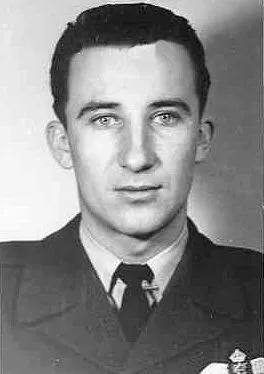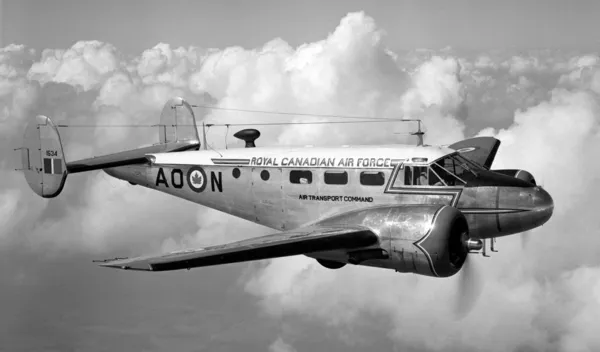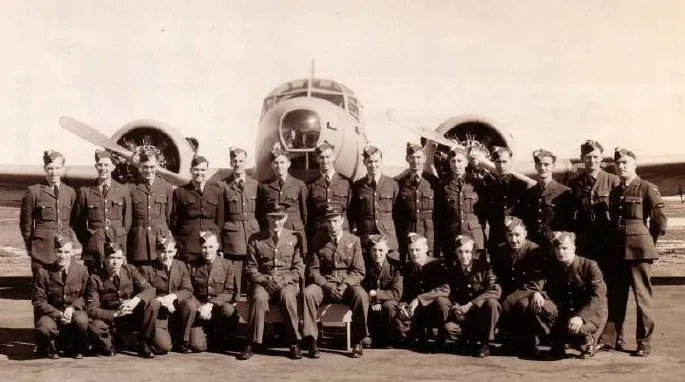1957-02-04: Aircraft crashed in a snowstorm during a training exercise. Instructor Flying Officer B W Cherewick RCAF (22) and a not named NATO student pilot were killed in the crash.
Cherewick, Boris William (Flying Officer)
Killed in Flying Accident 1957-February-04


Birth Date: 1934-June-18
Born: Yorkton, Saskatchewan
Parents: Dr. William & Ann (nee Onofreyo) Cherewick of Fort Garry, Manitoba
Spouse:
Home: Yorkton, Saskatchewan
Enlistment: Winnipeg, Manitoba
Enlistment Date: 1952-October-31
Service
RCAF
Unit
2 AOS- Air Observer School
Base
RCAF Stn. Winnipeg, Manitoba
Rank
Flying Officer
Position
Pilot
Service Numbers
44841
Expeditor serial: 1494

Beechcraft CT-128 Expeditor Mk. 3TM (Serial No. A-734), (Serial No. CA-134), RCAF (Serial No. 1534), coded AO-N, Air Transport Command.
The Beechcraft Model 18 (or "Twin Beech", as it is also known) is a 6- to 11-seat, twin-engined, low-wing, tailwheel light aircraft manufactured by the Beech Aircraft Corporation of Wichita, Kansas. Continuously produced from 1937 to November 1969 (over 32 years, a world record at the time), over 9,000 were built, making it one of the world's most widely used light aircraft. Sold worldwide as a civilian executive, utility, cargo aircraft, and passenger airliner on tailwheels, nosewheels, skis, or floats, it was also used as a military aircraft.
During and after World War II, over 4,500 Beech 18s were used in military service "“ as light transport, light bomber (for China), aircrew trainer (for bombing, navigation, and gunnery), photo-reconnaissance, and "mother ship" for target drones "“ including Royal Canadian Airforce (RCAF), United States Army Air Forces (USAAF) C-45 Expeditor, AT-7 Navigator, and AT-11 Kansan; and United States Navy (USN) UC-45J Navigator, SNB-1 Kansan, and others. In World War II, over 90% of USAAF bombardiers and navigators and pilots trained in these aircraft.
In the early postwar era, the Beech 18 was the pre-eminent "business aircraft" and "feeder airliner". Besides carrying passengers, its civilian uses have included aerial spraying, sterile insect release, fish stocking, dry-ice cloud seeding, aerial firefighting, air-mail delivery, ambulance service, numerous movie productions, skydiving, freight, weapon- and drug-smuggling, engine testbed, skywriting, banner towing, and stunt aircraft. Wikipedia
Unit Desciption
2 AOS (2 Air Observer School)
Air Observers were later called "navigators". For recruits in this stream, the training path after ITS was 8 weeks at an Air Observer School (AOS), 1 month at a Bombing & Gunnery School, and finally 1 month at a Navigation School. The Air Observer schools were operated by civilians under contract to the RCAF. For example, Nos. 7, 8, and 9 were run by CP Airlines. However, the instructors were RCAF. The basic navigation techniques throughout the war years were dead reckoning and visual pilotage, and the tools were the aeronautical chart, magnetic compass, watch, trip log, pencil, Douglas protractor, and Dalton Navigational Computer. They trained in the Avro Anson.
Formed at Edmonton, Alberta - 5 August 1940
RCAF.Info - RCAF Station Edmonton Alberta
Re-formed at Winnipeg, Manitoba 15 November 1955
Project 44 BCATP